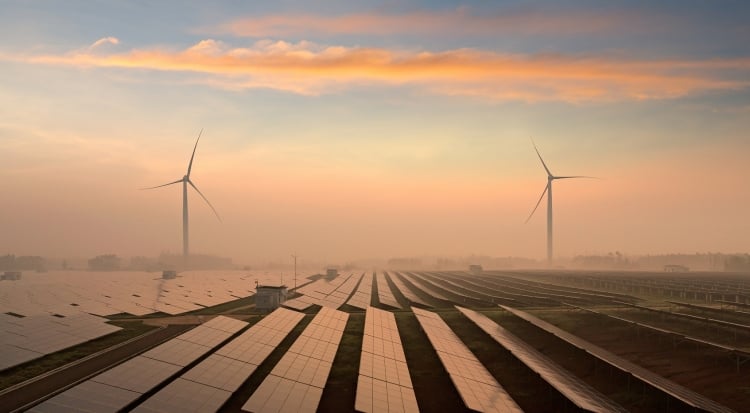
The latest CfD round, which opened in December, is the first to include solar PV since the first auction. Image: Getty.
With high wholesale prices alongside lowered levy rates, electricity suppliers are to receive reconciliation payments for their Contracts for Difference (CfD) contributions for the first time.
While generators receive top-up payments to the strike price they are paid for the electricity they generate, but they can also pay back money when the market prices rise beyond their strike price, with the scheme therefore providing both revenue certainty for generators alongside acting as a hedge for consumers.
However, this quarter is the first in which electricity suppliers are to receive reconciliation payments, with the Low Carbon Contracts Company (LCCC) – the counterparty of the CfD – reducing the interim levy rate (ILR) to £0/MWh in September due to the high wholsale prices, with this rate remaining for the rest of the year.
The ILR is part of the Supplier Obligation, a compulsory levy for all UK-based electricity suppliers to fund the payments to CfD generators for the electricity they generate that also includes a lump sum 'reserve' payment alongside the daily interim rate payment.
At the end of a quarter, the amount collected from generators is reconciled with suppliers, with any surplus funds put toward the Total Reserve Amount (TRA), reducing the amount suppliers have to pay. If the sum of the overcollection and the current TRA is higher than the next quarter’s TRA, the difference is returned to suppliers.
In this instance, the expected net payments from generators over the quarter totalled £133,667,990, while the TRA for Q4 2021 was £208,986,765. Meanwhile, the TRA for Q1 2022 is set at £303,432,348, and is netted off against the Q4 2021 numbers, which means the LCCC is forecasting a total reconciliation payment of £39,222,407.
This is expected to continue, with the ILR having also been set at £0/MWh for the current quarter due to the ongoing high wholesale prices. As such, the LCCC is forecasting another net payment to suppliers in the next quarterly reconciliation.
It follows the latest CfD auction opening in December, with a £285 million budget for a target of 12GW of electricity capacity – 5GW of which is for Pot One technologies. It is the first round to allow solar PV since the intial CfD auction, and the first ever to include co-located energy storage.

